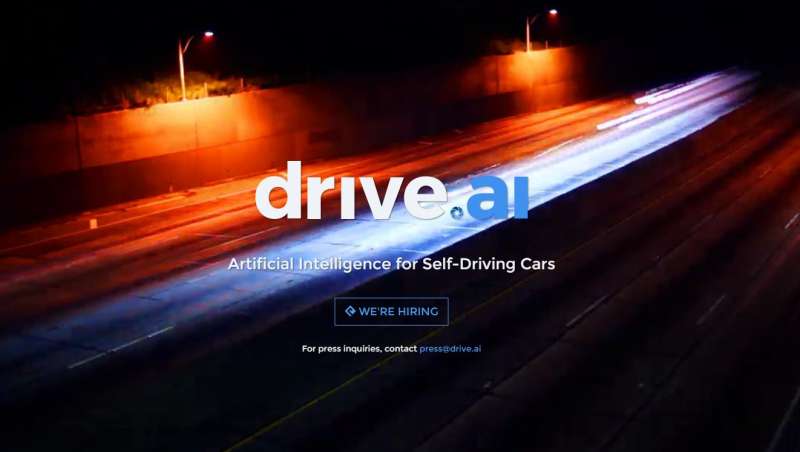April 27, 2016 weblog
Drive.ai to use deep learning smarts on autonomous cars on the road

(Tech Xplore)—Earlier this year, Fortune contributor Kirsten Korosec wrote that "A car's legal driver doesn't always have to be human, according to U.S. vehicle safety regulators—it can also be artificial intelligence."
She was referring to what The National Highway Transportation and Safety Administration told Google: The AI system controlling its self driving car can be considered, under federal law, as a driver—a critical first step, she added, for Google towards commercializing self driving cars.
Google's confidence in AI's role in safe self-driving was not ignored by Korosec. It's a message that self-driving advocates have stated a number of times. "Google believes that its AI self-driving system will consistently make the smartest, safest decision for the occupants of the vehicle as well as pedestrians or other users sharing the road; safer than even a human driver."
Well, it's April and self-driving's future is in the news. Tuesday headlines spoke about California to see AI on the road. Google was not in the headlines but instead a Silicon Valley tech startup called Drive.ai, which has got the green light from the state of California to do trial runs of autonomous cars on roads.
What makes the Drive.ai initiative interesting is that it is committed to letting its A.I. driver to learn and manipulate the vehicle on its own, and not just follow through a set of pre-programmed driving instructions, said Auto World News.
What also makes the news interesting is that Drive. ai is not exactly a household or even coffee shop name. Evan Ackerman in IEEE Spectrum: "we had no idea that Drive.ai even existed until just last week."
Self-driving on Drive.ai's terms is centered on deep learning. The approach veers off from people sitting down to program-in specific rules. The deep learning approach learns what to do by understanding the data.
Generally, before deep learning, doing machine learning was all about feature selection, Drive.ai's co-founder Carol Reiley said in IEEE Spectrum. "It was a very crude way of doing it, and it was difficult and time consuming to get these algorithms to recognize anything." Deep learning, she says, is much more analogous to the way humans learn. "You show an algorithm good and bad examples, and it learns to generalize."
Drive.ai is a Silicon Valley start-up founded by former lab mates out of Stanford University's Artificial Intelligence Lab. They brought to their startup knowhow in valuable areas: natural language processing, computer vision and autonomous driving.
Co-founder Sameep Tandon spoke to IEEE Spectrum. "This team helped pioneer how to scale deep learning, which is one of the reasons why deep learning has been successful as of late."
Jacob Kastrenakes in The Verge said "that means, like a human, the more time it spends driving and the more scenarios it encounters, the better it'll get at responding to them."
Reiley explained how their approach matters: "We're solving the problem of a self driving car by using deep learning for the full autonomous integrated driving stack—from perception, to motion planning, to controls—as opposed to just bits and pieces like other companies have been using for autonomy. We're using an integrated architecture to create a more seamless approach."
Ackerman said Drive.ai is the 13th company to be granted a license to test autonomous vehicles on public roads in California.
More information: www.drive.ai/
© 2016 Tech Xplore



















